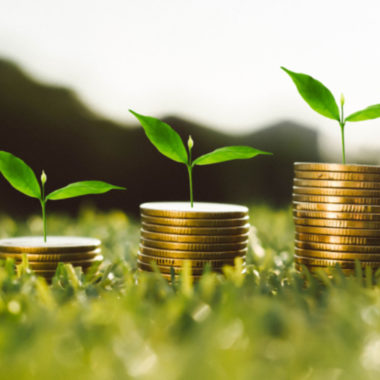Customer expectations from banks have changed significantly in the past decade. Ten or 15 years ago, all they were looking for was easy access to local branches, generous rates, and a convenient banking experience. Today, with an increased awareness on how their actions impact the world around them, customers have come to expect a lot more from their bank. As a result, sustainability has started to become a key part of every banking initiative.
Not only do banks need to demonstrate that they have finessed the mobile and online world, but are also expected to be able to show their commitment to sustainability. With three in five (61%) customers in the UK now stating they want their banking provider to “do more to create a positive, social and environmental impact,” there is no time like the present for banks to start looking at how they can make their practices eco-friendlier.
Even the United Nations understands the importance of the sustainable banking movement. The UN issued a statement in April this year, announcing 43 banks from 23 countries who are partnering together to be a part of the Net-Zero Banking Alliance, a global organisation committing to have net-zero emissions by 2050 or sooner.
But how can this be achieved practically? Below we have listed five ways in which banks can make their customer card and payment journeys greener, including specific examples of which banks are already taking steps in this direction, and how this will shape the future of banking.
Giving recycled materials new life
The world produces a staggering 381 million tonnes in plastic waste per year, and this is set to increase twofold by 2034. Of this waste, 50% is single-use plastic and less than 10% has ever been recycled. This plastic is not only responsible for the pollution in rivers and oceans, having a devastating impact on already fragile ecosystems, but also ends up in the food we eat and the clothes we wear.
The good news is that it can be turned into recycled banking cards from waste ocean plastic or recycled PVC, reducing carbon emissions. For example, the Thales Gemalto Reclaimed Ocean Card is made using 70% plastic collected from remote coastal areas.
Recycled plastic can also be used to make One-Time Password Authentication (OTP) tokens, such as Thales Gemalto Green OTP tokens. These managed to save 125 tonnes of virgin ABS (acrylonitrile butadiene styrene) last year by changing production to cases made of second-life plastic.
Using alternative eco-friendly material
While recycling plastic is great, not contributing to the problem of virgin plastic in the first place is the only way we can reduce the amount that eventually ends up as waste. One way to do this is to make bank cards from non-edible corn, which is biodegradable. These cards meet all requirements for safety and reliability and are proven to be durable throughout their life. The cards have also been rigorously tested to withstand normal daily wear and tear, such as a drinks spillage or being taken in and out of a wallet.
More and more banks are beginning to opt for eco-friendly cards, with Findomestic leading the way as one of the only Italian banks to provide a greener payment card. Since the beginning of 2021, Findomestic has begun replacing traditional PVC bank cards with cards made from polylactic acid (PLA), an eco-friendly plastic substitute. When compared to traditional PVC cards, PLA cards are a far more sustainable alternative, with the disposal of each PLA card emitting 84% less toxic gas than a PVC card.
Reducing and offsetting the carbon footprint of banking products
By measuring, offsetting and certifying the carbon created when producing banking products, banks are more likely to be able to see exactly where their biggest outliers are in terms of carbon pollution. They can then introduce a variety of carbon mitigation programmes to help attain carbon-neutral accreditation for each product and service. Alternatively, they can also use a supplier that does these jobs on their behalf.
For example, Doconomy has recently committed to measure and cap the CIT impact of their spending. The company has also stepped up its efforts to tackle global warming by joining the Priceless Planet Coalition and supporting reforestation by pledging to plant 100 million trees by 2024.
Reducing paper consumption & postage
With solutions like Instant Issuance, there is no need for banks to use harmful packaging or send out mailers. A Digital PIN can delivered in seconds via mobile app or text, reducing the amount of paper banks physically post to their customers and in turn, decreasing their production levels of CO2.
Recycling end-of-life products
Finally, banks can also become greener by managing end-of-life cards with partner recycling companies. Here, the plastic is incinerated to generate energy and the metal in cards is recovered for re-use in new products. This means that 0% of material ends up in landfill, reducing greenhouse gas emissions.
—
The ways in which banks are making their customers’ card and payment experience greener is bound to change and evolve over time. Thanks to eco-friendlier practices already available, more and more customers will soon be able to pay for goods and services with a card that is compliant with sound environmental principles.
Interested and want to learn more? Leave a comment below and make sure to also follow us on Twitter at @ThalesDigiSec!



